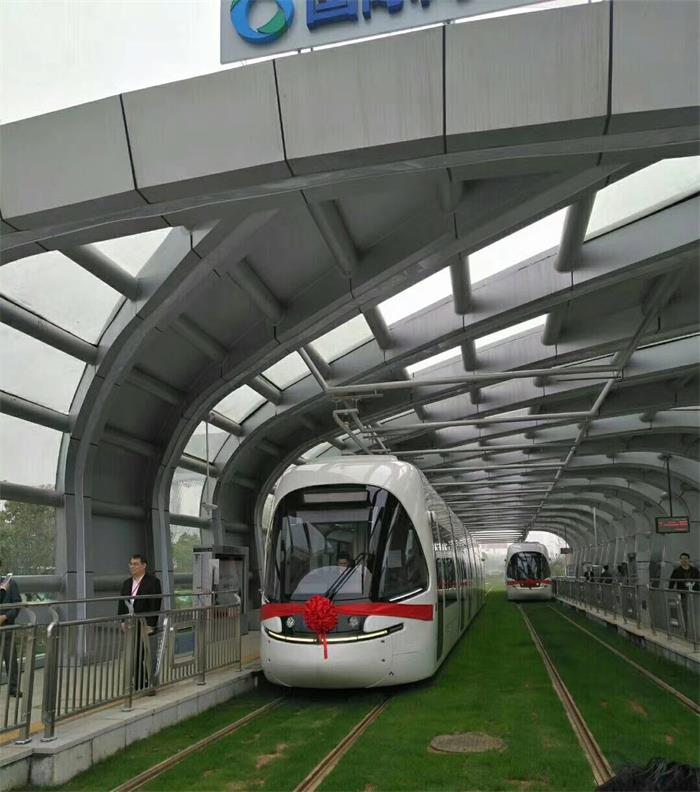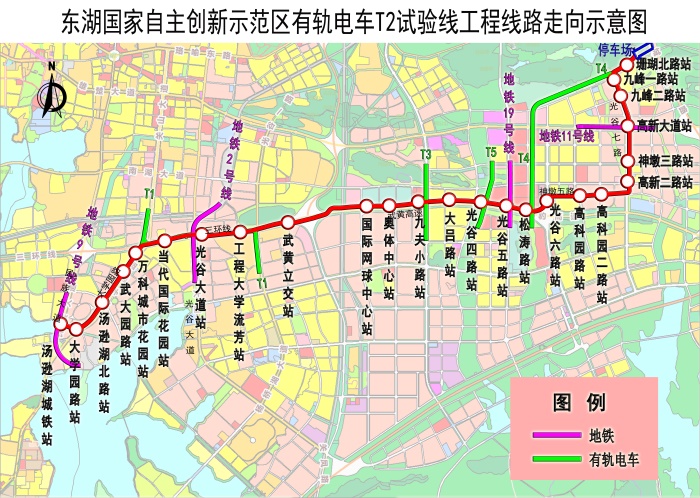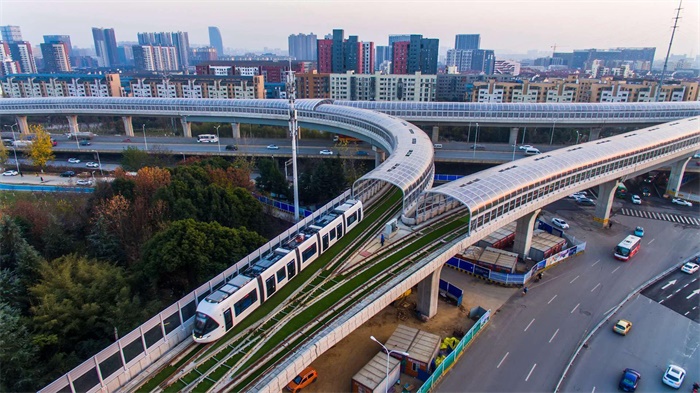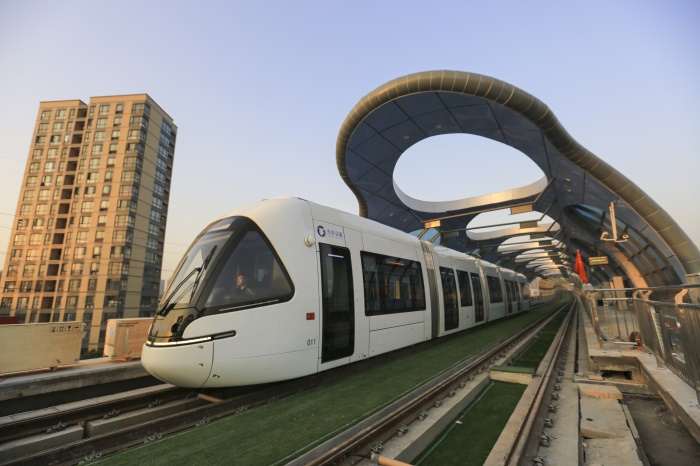NEWS & EVENTS

NEWS & EVENTS

Tramcar Lines Come into Trial Operation at Optics Valley, Wuhan
On April 1, tramcar lines of T1 and T2 came into trial operation at the national self-dependent innovation demonstration area at Donghu Lake of Wuhan. The design of T2 was completed by Beijing Rail and Transit Design & Research Institute Co., Ltd.
In the light of the TOD concept, T2 connects the western built-up sub-area and the eastern extended sub-area of the innovation demonstration area at Donghu Lake, sustains the development of the principal axis and the eastward expansion, and serves WTA, Olympic Sports Center and the central city of the Optics Valley. The line starts from Tangxunhu interurban railway station and ends at Shanhubeilu Station by way of Tianheng Road, University Park Road, 3rd ring road, Gaoxinsan Road, Shendunwu Road, Guangguqi Road and Jiufengyi Road. The line runs as long as 19.2km, along which there are 25 stations (of which 3 are elevated stations and others are ground stations) and one parking lot. T2 reaches transfer stations of 4 subway lines and shares a same line at the 3rd ring road section. The shared line extends in three directions on both ends, realizing the flexible operation of two lines and six crossroads.
T2 is a demonstration tramcar line of the national self-dependent innovation demonstration area at Donghu Lake of Wuhan. Methods for laying the line of T2 were complicated and diverse. Limited by existing buildings, there are ground sections, elevated sections and U-shape sections. The line meets with a number of subway lines for transfer, with the connection being complicated. In addition, the line passes through the expressway toll gate at Wuhuang, increasing difficulty in coordination and complicating the engineering scheme. Guided by leaders of UCD and Beijing Rail and Transit Design & Research Institute Co., Ltd., members of the project team overcame lots of difficulties and made designs meticulously to live up to the mission of “Design the City and Build the Future” and was reviewed favourably by the proprietor.
Tramcars of the Potics Valley are named “Quantum of Optics Valley”. With the energy supercapacitor power supply technology being adopted for the very first time, the practice of “No touch nets along the whole line and no need to charge the cars at every station” has been the first of its kind in China. When the cars go down the slopes or need to be brought to a halt, they can recycle energy automatically to become energy-efficient.
There are five distinctive stations on the line of T2. Shaped in a rapidly spinning tennis, the International Tennis Center Station and the Olympic Center Station have become the sacred shrines by their name of “Whirlwind Tennis Court” for the tennis athletes to gain high fame in the world. To match the center tennis stadiums, the “whirlwind” element has been adopted as the soul of design for the landscape of the stations. For the design of the Wuhan University Park Station and the Vanke City Garden Station, the concept of “Urban Cells” complies with the theme of “Biotechnology”, bringing about a better harmony between the stations and the surroundings and an extremely technological aesthetic perception. The shape of the stations consists with the style of the totally closed acoustic barriers at the elevated sections, maintaining a uniform style at all elevated sections. To tally with the bioindustry of the Optics Valley and with “saplings” as the concept of design, the Gaoxin Avenue Station embodies the ecological and healthy development line of the Optics Valley and also echoes the steady growth and rapid development of the Optics Valley in Wuhan. The ups and downs and the glaring vitality reflect the green and modern biopolis as well as the indomitable fighting spirit of the Optics Valley.
Opening the tramcar lines to traffic will substantially improve regional service levels and the lines will become the city card of the national self-dependent innovation demonstration area at Donghu Lake, Wuhan.



